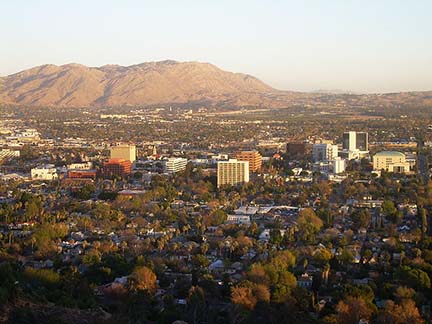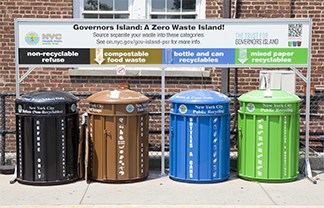

A typical SCS landfill expansion project contains an engineering evaluation and analyses addressing important technical considerations which include the existing hydrogeologic conditions, global slope stability, Landfill base settlement, geomembrane compression and strain, leachate pipe strength, useful life of the existing infrastructure and utility lines, stormwater management, leachate and landfill gas system expansion.
This case study site, it shows that the vertical or piggyback expansion of a landfill is a unique way of solving landfill airspace shortage problem. Its feasibility is always site specific and depending on the existing waste types, slopes, liners, design capacity of leachate and gas collection, and stormwater management systems. In addition, the landfill design needs to be thoroughly investigated, engineered, and operated.
From the results of the global final slope stability and the landfill base settlement analyses, it concluded that a vertical expansion at the case study landfill will not increase the risk to human health or the environment over the existing regulatory approved conditions. A vertical expansion provides the landfill owner with an opportunity to increase the landfill volume and provide the residents with the maximum service life within the existing footprint of the permitted Landfill. This maximization of available resources does not expand the environmental footprint of the site and provides better environmental protection and at the same time creates a sustainable landfill site.
A vertical expansion provides the landfill owner with an opportunity to increase the landfill volume and provide the residents with the maximum service life within the existing footprint of the permitted Landfill. This maximization of available resources does not expand the environmental footprint of the site and provides better environmental protection and at the same time creates a sustainable landfill site.
This case study was presented at ISWA 2016.
Read and share the complete case study here.

This year, the South Tampa Chamber partnered with five South Tampa schools to sponsor The Great American Teach-In (GATI). On November 17, volunteers from SCS Engineers attended several schools County-wide to explain what their profession is and what they do on the job. GATI gives elementary and middle school students’ exposure to the different careers that make our world run.
Carlo Lebron, PE, chatted with second graders at Ballast Point Elementary about how as an engineer he can help businesses and citizens protect the environment. Afterward, Carlo said, “The class was wonderful and full of inquisitive kids!”
Brooke Fait, MPH, PG, discussed the health and safety aspects of environmental engineering with sixth graders at Madison Middle School. Brooke stayed for an encore session when one of the kids came in and said, “Yeah! This is the first one [GATI] I’ve had all day.” Who could resist?
Bruce Clark, PE, BCES, LEED AP® and Maria Bajrami, Associate Professional went to Crestwood Elementary. They explained what a civil engineer and environmental professional does every day. The two brought a landfill biogas energy use model with them and explained the role landfills play in a community; from having a safe place for our trash, to recycling, to creating energy, to using nature to help turn trash back into natural by-products.

Bruce describes a portion of the day, “When we mentioned in the presentation about how a special type of bug in the landfill eats garbage and makes a gas, that precipitated a landslide of questions for a good 45 minutes! How big are they? Do they have babies? How do they grow? Do they come out of the landfill? Why do they like the landfill? How can they live with no oxygen?”
He went on to say, “If you want to know the answers, just ask the students. These kids are very perceptive, engaged, sharp and well behaved. I did not know half of what these kids know at seven years old.”
Maria put the day in perspective by saying, “As adults, often times, we lose sight of important lessons we learn as children… We forget that we don’t need as much as we think we do to be happy. We forget to ask questions, in fear that they are not relevant or stupid. We forget to brush things off and keep moving, should life knock you down. Standing in front of 36-second graders during ‘The Great American Teach-In’ served as a reminder of the simplicity, curiosity, and resilience of a child, and how those lessons should be captured and never forgotten.”
Thank you to the students, teachers, and administrators for making this wonderful day possible.
SCS Engineers is proud to participate and support our communities across the nation.
 Dan Johnson, Vice President of SCS Engineers, recently joined Goodwill Industries of San Diego County (GISD) board of directors.
Dan Johnson, Vice President of SCS Engineers, recently joined Goodwill Industries of San Diego County (GISD) board of directors.
Following a tradition of giving back to the community established by his father, who lived through the depression and moved to California during the Dust Bowl, Johnson will help the organization by providing experience and knowledge of real estate and environmental issues.
“We are pleased that Dan agreed to sit on our board,” said GISD CEO Mike Rowan. “We look forward to his assistance and expertise.”
GISD was created in 1930 to provide employment and training opportunities to people with disabilities and other barriers to employment. GISD uses the revenue generated from the sale of donated goods at its retail stores and after-market facilities to fund the operation of job training programs and employment services.
“I believe deeply in the organization’s mission, to provide employment and training opportunities to people with disabilities and other barriers to employment,” said Johnson. “It’s important – and very fulfilling – to enable others to succeed.”
In 2015, GISD helped to find employment for more than 4,000 people in San Diego.

On Saturday, November 12, SCS Engineers Superintendent John Jones made an unexpected discovery at work. During his CQA inspection at the Okeechobee Landfill, John discovered an injured American bald eagle on the floor of a cell in the project area. With the help of friends from Arnold’s Wildlife Rehabilitation Center (AWRC), the young eagle was rescued and is now recovering at Arnold’s facility.
No one knows how the eagle became injured, but three eagles were observed earlier in the morning in what appeared to be territorial combat. The young bird had the good luck of being found by John and according to Sue Arnold, the founder of AWRC, “is on his way to a full recovery and will be released back into the wild.”
When asked if the eagle has been named, Sue Arnold said they don’t usually name the rescued animals because their ultimate goal is to rescue, rehabilitate, and return recovered animals to their natural habitat. She suggested, “call him ‘JJ’ since John took the time and effort to help us rescue the eagle, which is awesome.”
The south-central Okeechobee landfill, run by Waste Management, provides local businesses and industry with professional disposal services that are safe and meet the highest standards for environmental compliance. The Landfill is a certified wildlife habitat as well. The site is certified by the National Wildlife Habitat Council. Okeechobee dedicates 2,000 of its 4,100 acres as a wildlife habitat that will soon become home again to the young eagle JJ.
Arnold’s Wildlife Rehabilitation Center, Inc., is a non-profit 501(c) educational-based wildlife care facility. The Center is dedicated to bringing people and wildlife together to develop a community awareness of the value of Florida wildlife.
We’ll keep you posted when JJ’s release into the wildlife habitat is planned.
Breweries under SIC code 2082 (malt beverages) are required to sign up for the new California stormwater permit, under the State Water Resources Control Board. That permit went into effect a year ago. To this point, enforcement has been slow but there are indications that enforcement will increase in 2017.
The mandatory minimum penalty for non-filing starts at $5,000 and can increase substantially under the Clean Water Act for discharges that do not meet state water quality standards. In addition, based on recent experience, there is considerable risk of lawsuits brought by environmental groups or others. More than 120 suits have been filed this year. In either case, this is not an issue you should ignore.rewpubs are likely exempt (based on SIC code), our analysis of available public data indicates that 129 of the 600 or so breweries that should sign up for the permit have done so or around 20%. Hat’s off to our brethren who have complied!
Based on SIC code brewpubs are likely exempt; our analysis of available public data indicates that 129 of the 600 breweries that should sign up for the permit have done so. Hat’s off to our brethren who have complied!
And 117 of the 129 have submitted No Exposure Certifications. This certification process is quite straight forward and includes a checklist that, in a nutshell, states that no operations or storage of spent grain or yeast are outdoors and uncovered (i.e. all raw and intermediate products must be covered and sealed when moved into and out of the facility).
That leaves over 400 breweries at risk.
If you aren’t sure whether you’re required to comply with the stormwater permit or aren’t sure what to do, stop by the SCS Engineers booth (#10) at the CCBA Fall Conference in California for advice.
CONTACT YOUR LOCAL SCS ENGINEERS’ OFFICE IN YOUR STATE
We can also help you with other water issues including flood control site drainage, water treatment options, water recycling, and using groundwater to reduce your reliance on City or water district supplies.
CCBA Fall 2016 Conference
November 13, 2016 – November 15, 2016
Oakland Scottish Rite Center
1547 Lakeside Dr.
Oakland, CA 94612
Cory Jones, QISP
Stormwater Manager
858-571-5500
SCS Engineers was selected to provide on-call services for capital improvement projects at the Riverside Regional Water Quality Control Plant (RWQCP) and the Tequesquite Landfill for the City of Riverside Public Works Department.

SCS Engineers provides wastewater planning, compliance, and engineering services for capital improvement projects at the Riverside Regional Water Quality Control Plant and the Tequesquite Landfill for the City of Riverside Public Works Department.
Over the next three years, SCS will provide wastewater planning and engineering services; geotechnical and materials testing; specialty inspection, including concrete, structural steel, electrical, welding, instrumentation, high voltage inspection services, and other optional construction inspections; PLC programming services; landfill studies, remediation and monitoring; air quality testing and compliance services; as well as regulatory and environmental compliance services.
“SCS Engineers is excited to be a part of the RWQCP plant expansion that will ensure the City of Riverside complies with current state and federal regulations,” said Pat Sullivan, Sr. Vice President with SCS Engineers. “We look forward to assisting RWQCP and the Tequesquite Landfill meet the growing needs of their community.”

Caroline Larose was awarded the Robert P. Stearns – SCS Engineers Master’s Scholar this year. Her project, “Material Flows: Strategies to Reduce Ann Arbor’s Municipal Solid Waste and Improve Diversion,” consists of a comprehensive benchmarking analysis of urban waste programs and a review of city stakeholders to distill a set of MSW management, education, and awareness best practices. Following her research, Caroline plans to draft recommendations for the City, which will include updated MSW goals and an action plan to improve diversion and reduce waste creation.
About Caroline Larose
Caroline chose to go back to school to further her pursuit of making cities more sustainable. She identified solid waste as her primary research focus and has worked towards her idea of eliminating waste as a concept. Caroline is now in her third year as a dual MBA/MS student at the Erb Institute for Global Sustainable Enterprise at the University of Michigan.
Caroline works to promote waste reduction and diversion on campus and throughout the Ann Arbor community by advising the implementation of campus-wide composting and uniform bin signage, as well as by organizing events such as the first Ross School of Business Waste Audit & Education Day and annual clothing swaps. Caroline, a member of the University-wide Student Sustainability Initiative board, has served as the VP of Sustainability for the Ross Net Impact chapter for 2-years. As a result of her leadership on campus, Caroline was selected to join the Ann Arbor Resource Management Team, advising the City of Ann Arbor on how to reduce its solid waste and improve diversion.
Getting a firm handle on a solid waste operation and expenses is a challenge for any solid waste agency manager or landfill operator. It is particularly imperative in this era of “lean and mean” budgets and looming regulatory policy. Doing more with less is the watchword for most operations across the country still reeling from the financial impacts of the Great Recession.
SCS Engineers has created a package of articles to help you identify if your landfill, landfill gas, or solid waste operation is ready for 2017. We hope this useful guidance will help you plan for the upcoming year. SCS professionals are always available to answer questions and provide advice. Find the office or SCS professional nearest to you by clicking on one the links here: Offices and Professionals.
Download, print or share this package by using the download button under the articles or by using the navigation at left. The package includes the following information written by SCS National Experts:

Read the full article by Marc Rogoff, SCS Engineers.
Article in Waste360: explains who’s impacted and how to begin managing the costs.
SCS Technical Bulletin: a digest of hundreds of EPA regulatory policy into the information and timelines to act on now.
Article: strategic financial planning to support infrastructure costs.
Call our compliance specialists – find the office nearest you or email us at